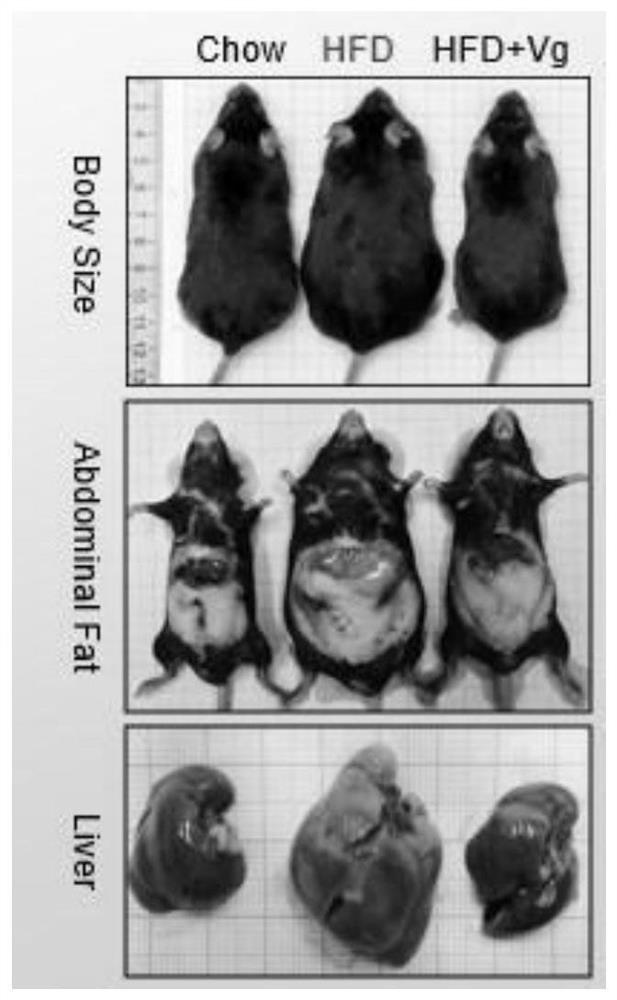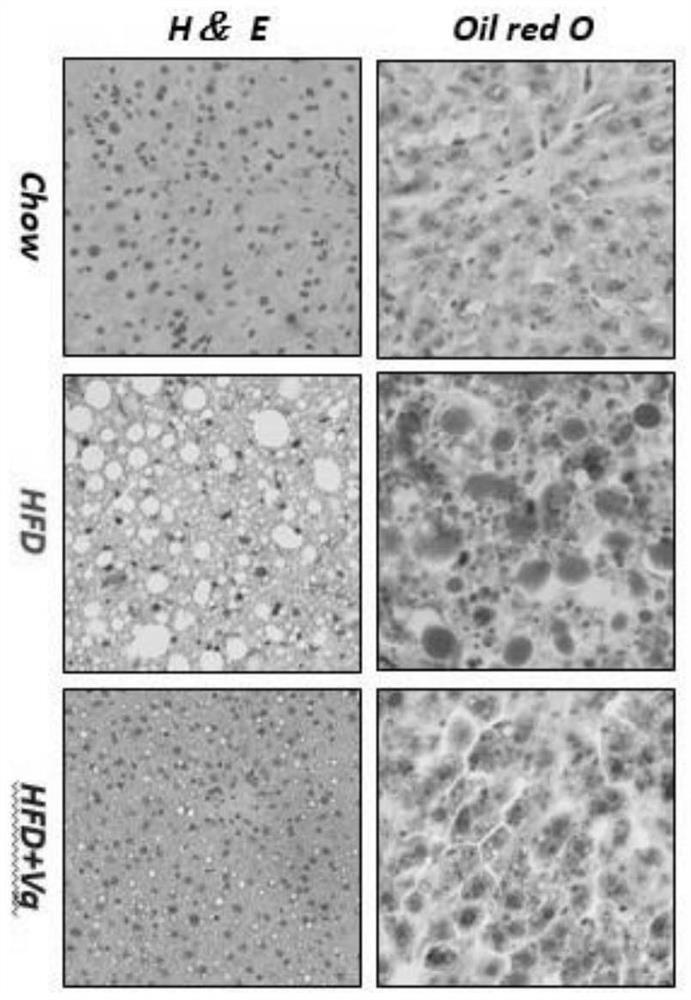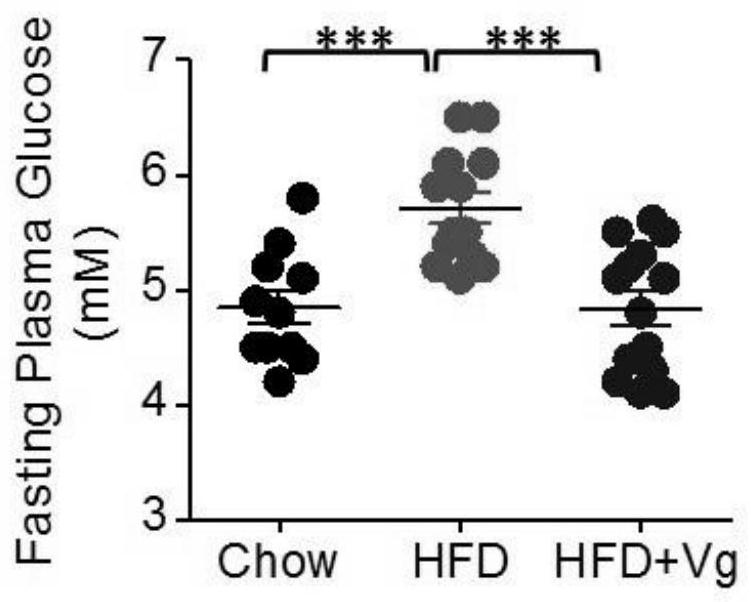A kind of application of pharmaceutical composition
A composition and medicine technology, applied in the field of medicine, can solve the problems of improper treatment, non-alcoholic fatty liver disease, lack of medical treatment and lack of medicine for obesity, and achieve the effects of reducing the degree of fatization, promoting the influx of calcium ions, and alleviating pain.
- Summary
- Abstract
- Description
- Claims
- Application Information
AI Technical Summary
Problems solved by technology
Method used
Image
Examples
Embodiment 1
[0027] Example 1: Peptides Reduce Fat Content and Hepatic Fatty Degree Test
[0028] Establishment of male C57BL / 6 mice (Chow group) fed with normal diet and male C57BL / 6 mice (HFD+Vg group) treated with high-fat diet (High-fat polypeptide) to study non-alcoholic fatty liver experimental animal model .
[0029] Two-month-old male C57BL / 6 mice were randomly divided into three groups: fed with normal diet (Chow group), fed with high-fat diet (HFD) (HFD group) and fed with high-fat diet at the same time Peptide administration treatment (HFD+Vg group). The Chow group was fed with normal feed throughout the experiment, the HDF group and the HFD+Vg group were fed with high-fat feed for 3 months, and then the HFD group continued to be fed with high-fat feed for 5 months, while the HFD+Vg group was fed with high-fat feed. At the same time, oral gavage (20mg / kg) of polypeptide was used every day for 5 months.
[0030] The degree of fatty liver tissue in non-alcoholic fatty liver is ...
Embodiment 2
[0031] Embodiment 2: The test that polypeptide improves insulin resistance
[0032] The pathogenesis of non-alcoholic fatty liver disease is: at the beginning of the disease, lipids accumulate in liver cells, and the phenomenon of fat accumulation is often more likely to occur in patients with type 2 diabetes and other metabolic syndromes; then, insulin resistance and accompanying The inflammation of the liver will further aggravate the symptoms of non-alcoholic fatty liver, and eventually lead to the generation and aggravation of non-alcoholic fatty liver. Insulin resistance refers to the decline in the efficiency of insulin in promoting glucose uptake and utilization due to various reasons, and the body compensatoryly secretes excessive insulin to produce hyperinsulinemia in order to maintain the stability of blood sugar. Since dyslipidemia can stimulate gluconeogenesis, leading to hepatic insulin resistance and decreased peripheral glucose utilization, improving blood lipid...
Embodiment 3
[0036] Embodiment 3: The test that polypeptide reduces alanine aminotransferase ALT and aspartate aminotransferase AST
[0037] ALT and AST are mainly distributed in the hepatocytes of the liver. When the liver cells are in a damaged environment such as inflammation or virus infection, ALT and AST will increase. The extent of its increase is consistent with the extent of liver cell damage, so it is currently the most commonly used liver function index, and ALT and AST are generally elevated in patients with non-alcoholic fatty liver disease. In the experiment, it was found that the ALT and AST of obese non-alcoholic fatty liver mice fed with high-fat diet were significantly increased, and after intragastric administration of polypeptides, the contents of ALT and AST decreased.
[0038] The alanine aminotransferase (ALT) and aspartate aminotransferase (AST) in the venous blood of mice with non-alcoholic fatty liver disease decreased significantly after polypeptide administratio...
PUM
 Login to View More
Login to View More Abstract
Description
Claims
Application Information
 Login to View More
Login to View More - R&D
- Intellectual Property
- Life Sciences
- Materials
- Tech Scout
- Unparalleled Data Quality
- Higher Quality Content
- 60% Fewer Hallucinations
Browse by: Latest US Patents, China's latest patents, Technical Efficacy Thesaurus, Application Domain, Technology Topic, Popular Technical Reports.
© 2025 PatSnap. All rights reserved.Legal|Privacy policy|Modern Slavery Act Transparency Statement|Sitemap|About US| Contact US: help@patsnap.com



